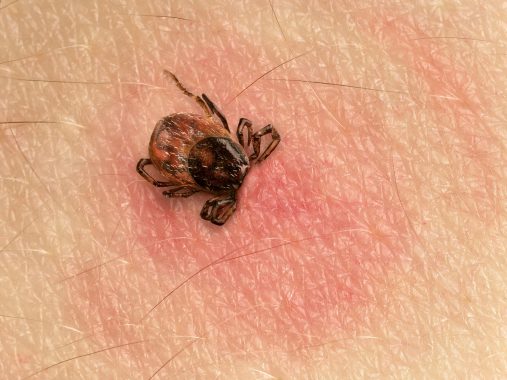Lyme disease in UK three times higher than estimated

Cases of lyme disease in the UK may be three times higher than expected and could reach as high as 8,000 cases in 2019, according to new research based on GP records.
Higher incidence rates of lyme disease were found in every UK region, particularly in Scotland, which reported the largest number of cases.
Currently, it is estimated that the annual number of new cases of lyme disease is around 2,000 to 3,000.
The new study of 8.4 million UK GP records extracted from a database which covers 8% of the UK population showed the total number of cases of lyme disease had increased ten fold from 2001 to 2012, from 60 to 595.
Yet, researchers from the UK and the Institute for Epidemiology in Frankfurt estimated the current annual number may be too low. They warned that if the number of cases continued to rise from since the end of the study period, the number could reach 8,000 in 2019.
This comes as NICE guidance urged GPs to diagnose and treat lyme disease on the basis of the characteristic rash alone.
The study, published in BMJ Open, extracted data from a primary care database and the results showed the combined number of cases recorded on the database from between 2001 and 2012 was 4,083 cases detected among 4,025 patients.
The estimated number of tick-borne lyme disease steadily increased in the 11-year period from 955 in 2001, to 7,738 in 2012. Researchers suggest the number may extend to 8,000 this year.
The number of treated suspected cases continually grew from 2009 to 2012, in contrast to the number of clinically diagnosed cases, which researchers suggest is due to ‘greater cause among the GPs and willingness to treat the illness early before confirming the diagnosis.’
NICE’s recent revision on lyme guidance advises all doctors to quickly prescribe antibiotics to suspected cases.
The study also found nearly one-quarter of all cases were of patients aged under 30. Additionally, 85% of all cases recorded in the study had a recording of a GP prescription for antibiotics on the first time meeting the lyme disease criteria.
Lyme disease cases were prevalent in every UK region, with Scotland having the largest number of cases, followed by south central and south west England.
The report concluded by saying that people are at risk throughout the UK, and the results ‘should lead to increased awareness of the need for preventive measures.’
The study’s authors discussed the reason for higher cases in Scotland was possibly due to the more moist environment which is suitable for ticks.
The news follows a letter sent last month by Scotland’s chief medical officer to healthcare professionals including GPs, advising NHS boards to raise awareness of early diagnosis and management of lyme disease.
The RCGP’s clinical champion for lyme disease Dr Anne Cruikshank told the Guardian: ‘These levels are not a big surprise to those of us who know about lyme disease. I expect the 8,000 figure may be an underestimate, since the data shows that positive lab results have doubled every five years.’
Pulse July survey
Take our July 2025 survey to potentially win £1.000 worth of tokens












